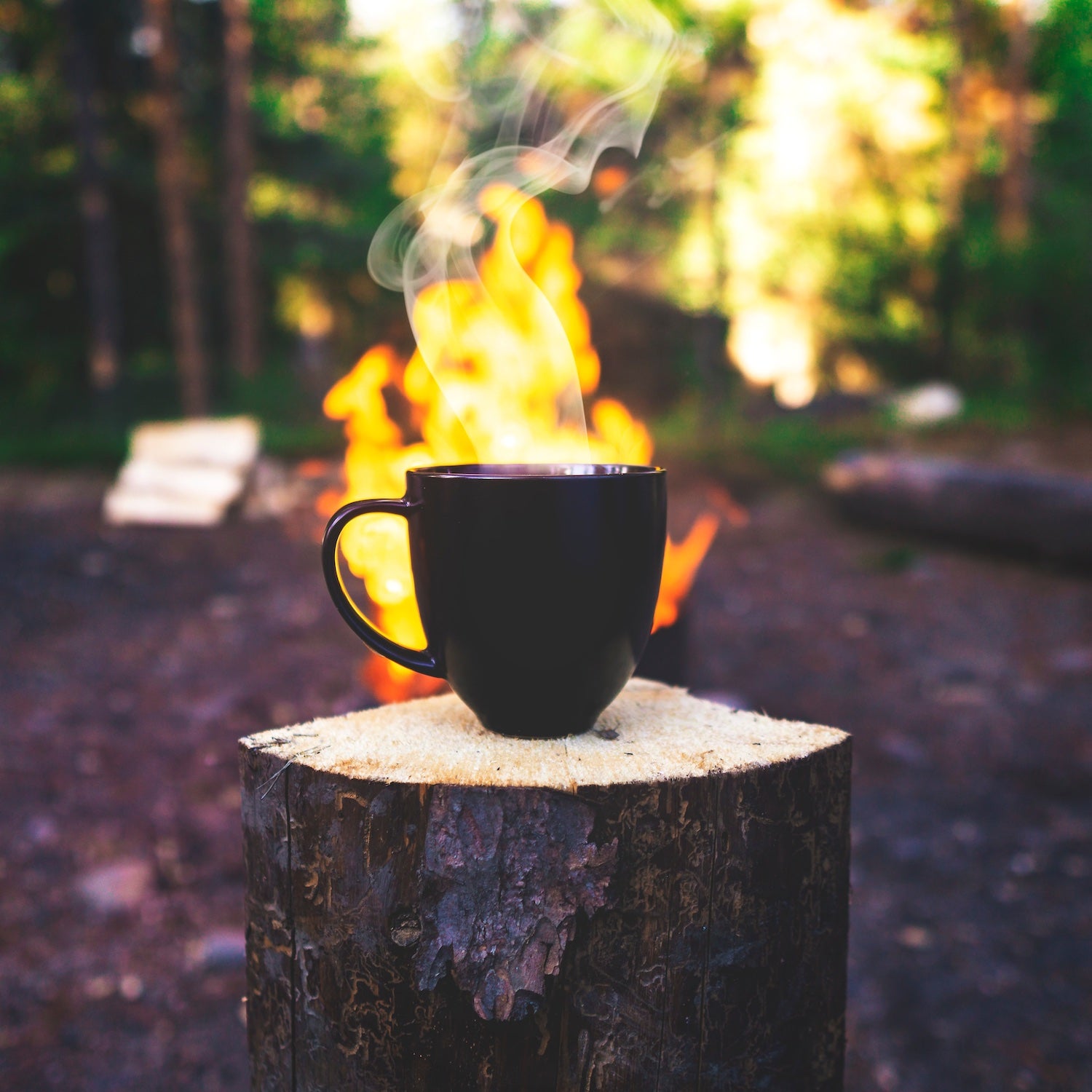Camping is all about the simple pleasures, and there are none simpler or more pleasurable than good coffee. Getting there, however, can be a journey.
Five years ago, I proudly identified as a tea person. (Blasphemy, I know.) Then I started dating a nationally ranked competition barista who would make me coffee for free. When a very charming man starts regularly handing you giant lattes with squirrels and swans and whatever else drawn in steamed milk at your local cafe, it’s hard not to pick up a bit of a caffeine addiction.
But then coffee shops closed during the pandemic, including the one my partner��worked at, and I was cut off from my source of hand-made lattes and espressos.��I decided it was high time I decided to learn how to make a good cup of coffee myself. And because I live in a van full-time and camp often, that turned into an all-out quest to master as many camp-friendly brewing methods as I could: French press, Aeropress, pour over, cowboy coffee—you name it.
They say trial and error is the best teacher, but after achieving everything from bitter French-pressed brews to weak Aeropress shots, I decided to loop in some real experts: Wes Fowler, my live-in competition barista and an AMGA-certified climbing guide, and Anna Brones, an avid bike-packer,��, and backcountry coffee expert.
So, without further ado, here are some of the most common errors with backcountry brew methods—and how to fix them.
Pour-Over
The first time I made a pour-over, I put my��dripper cone��(the ; $13) over my favorite mug, filled it with grounds, and started pouring. I poured and poured, and before I knew it, my cup was overflowing all over the table. Needless to say, it tasted awful.
Brones says the trick to pour-over coffee is to dial in your preferred coffee-to-water ratio at home. Then, once you’re in camp, measure the water before it goes into the kettle, adding just a little extra to accommodate for loss through steam.
To fully extract the flavor from the coffee, Fowler recommends pre-heating the dripper by rinsing it with boiling water. That way, the water won’t instantly cool down and lose its extracting power as soon as it hits the cold metal or plastic. Rinsing the filter will also wash out any papery taste and ensure that it seals to the funnel properly.
French Press
��Unlike a pour over, where you’re putting the kettle back on the heat between pours, a French press sits out at room temperature for four to eight minutes, depending on your grind. (With a coarser grind, you have less surface area, so the water will need��longer to pull out flavor.) During that time, the water is rapidly cooling, which could result in a weak brew. Fowler recommends using an��insulated French press, like Stanley’s ($65), or making a pot cozy for your press.
The other common error with the French press is using it like a pitcher. “Once your coffee is brewed, the trick is to get all the brewed coffee out,” says Brones. “Even if you’ve plunged it down and the grounds are still at the bottom, it’s still going to keep brewing as long as there’s hot water in there.” That over-extraction causes bitterness. Instead, she recommends serving it at once, or pouring it into a thermos to keep it warm until you’re ready to drink it.
AeroPress
The����(from $30), which uses a syringe-like plunger to create pressure and produce an espresso-esque��brew, has become a��favorite of camp-coffee fanatics in recent years. It’s pretty user-friendly, but you can still can go wrong by using too fine or too coarse a grind. I chose��just a notch or two down from espresso grind�� (medium-fine, the consistency of table salt), let it steep in hot water for two��minutes, then flipped and plunged for 30 seconds.
Like with other methods, Brones recommends dialing in your ratio at home. (I like to use 2.5 tablespoons of coffee to 8 ounces of water, but everyone is different.) Figure out what you like, then write it down on a slip of paper and keep it with your coffee kit.
If you’re looking to really step up your game, I recommend adding the����($25). The Prismo’s tiny valve allows for additional pressure buildup, creating an even creamier, espresso-like texture.
Cowboy Coffee
The biggest trick to cowboy coffee? Don’t be afraid of it.
“In terms of brewing, cowboy coffee is basically the same as a French press,” says Fowler; it just requires less fancy gear, and it’s just easier to keep warm while you’re brewing. He suggests packing a paper filter to pour the coffee through at the end of the extraction so you don’t get grounds in your teeth. (A clean bandana will also work.)
If you don’t have a filter, Brones recommends tossing in a handful of cold water at the end of the extraction to encourage the grounds to settle. Then, pour slowly to avoid disturbing them.
Bonus Tips for Upping Your Coffee Game
- ��Pack a small silicone spatula; it makes scooping grounds out of a French press much easier.
- If you’re pre-grinding your coffee, use fresh beans (they start to lose flavor two weeks after roasting). Weigh out portions with a scale to ensure precise ratios.
- If you’re packing whole beans (recommended), . An even grind can make a big difference in taste.
- Designate a separate coffee cup. Otherwise, you’ll get a whiff of last night’s leftovers in your morning brew.
- “Don’t worry so much about messing up,” says Brones. “Remember that no matter how bad a cup of coffee you make at home, that exact same cup will taste infinitely better just because you’re outside. So experiment, figure out what you like, and let yourself have fun with it.”


